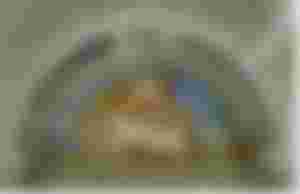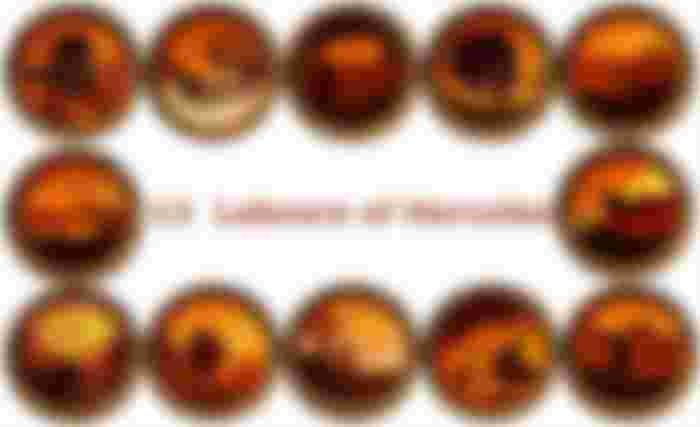Classical mythology is full of heroes, but Hercules (known to the Greeks as Heracles) is undoubtedly the most celebrated of them all. Although his heroic life was packed with daring escapades from beginning to end, rescuing maidens in need, fighting immortals and even giants, he was the “go to” guy when it came to taking care of risky business. Probably his most famous legend is ‘The Twelve Labors of Hercules’ - tasks so difficult as to be considered impossible for mortal men and even a demi-god such as he. What were these feats and why was Hercules bound to achieve them?

Hercules Wanted to Make Things Right
Many stories have been told about the feats performed by this demi-god around the Mediterranean. One of the most renowned of these tales is known as the 12 Labors of Hercules . In brief, these were a set of seemingly impossible tasks given to Hercules by Eurystheus, the king of Tiryns, who was also the hero’s cousin. These labors were undertaken by Hercules as he wanted to atone for a grievous sin he had committed.

The story of the 12 Labors begins with the murder of Hercules’ wife, Megara, and their children - by the hero himself! This occurred as a result of a temporary madness inflicted upon Hercules by the goddess Hera, who never liked him. When Hercules snapped out of his insanity, he was filled with remorse.
He consulted the Oracle of Delphi to find out what he could do in order to atone for his crime. The hero was told to go to serve Eurystheus, Hercules’ cousin, and the king of Tiryns, for 12 years. As Hercules considered Eurystheus to be an inferior man to himself, he was not too happy with this arrangement. Still, he was desperate to atone for his heinous acts, and did as he had been directed, and traveled to Tiryns to do whatever was his cousin’s bidding.
It was Eurystheus who came up with the 12 labors. Initially, the king had decided to give Hercules a series of 10 tasks. Later on, however, the king refused to recognize two of the tasks as being completed by the hero. Therefore, Eurystheus gave Hercules two more tasks to perform, hence constituting 12 labors in total. By completing these impossible tasks, Hercules would not only atone for his crime, but would also earn immortality and his rightful place among the Olympian gods.
Summary of the 12 Labors of Hercules
1.The Nemean Lion: Kill the monstrous lion with skin so tough that an arrow couldn’t pierce it. There are many images of Hercules wearing the hide of this creature.
2.The Lernaean Hydra: Kill the nine-headed snakelike beast that regenerates heads after they are cut off. After completing this task, Hercules made poison arrows by dipping the points in the Hydra’s blood.
3.The Ceryneian Hind: Capture the golden horned deer of the goddess Diana (Artemis) without hurting it.
4.The Erymanthian Boar: Catch the wild boar that had been frightening the people of Mount Erymanthus.
5.The Augean Stables: In one day, he had to clean the filthy stables which housed thousands of cows owned by King Augeas.
6.The Stymphalian Birds: Kill the scary birds that lived near Lake Stymphalos. Hercules used the poisonous arrows made from the Hydra’s blood.
7.The Cretan Bull: Capture King Minos’ insane, fire-breathing bull and bring it to King Eurystheus.
8.The Mares of Diomedes: Tame King Diomedes’ man-eating horses and bring them to King Eurystheus.
9.The Belt of Hippolyta: Obtain the golden belt of the Amazonian Queen Hippolyta.
10.The Cattle of Geryon: Capture the red cattle of Geryon, a winged being with three bodies. The cattle were also guarded by a giant and a two-headed dog.
11.The Golden Apples of the Hesperides: Get past the Ladon, a 100-headed dragon, and obtain the golden apples of the nymphs known as the Hesperides.
12.The Capture of Cerberus: Catch the three-headed guard dog of the Underworld without using any weapons.
Hercules the Monster Killer
As you can see in the list above, the tasks given to Hercules by Eurystheus varied in nature. Some, for instance, involved killing a deadly beast(s). For example, he had to slay of the Nemean Lion, the Lernaean Hydra, and the Stymphalian Birds. These beasts were not ordinary. For example, Hercules had to bring the skin of the lion that had terrorized the region around Nemea, but his arrows were ineffective and couldn’t pierce the lion’s hide. Mighty Hercules overcame this problem by tracking the lion to its cave and choking it with his bare hands.
The hunting hero
Other labors required the hero to capture certain creatures alive. These include the Ceryneian Hind, the Erymanthian Boar, and Cerberus. These might not seem to be insurmountable tasks at first glance, but of course they too had a twist.
How hard can it be to catch a hind (a female deer)? Well, of course it was no ordinary deer – this one had golden horns and bronze hoofs for a start. Not much advantage with those one would guess, but a sign that all might not be normal. Indeed, the deer was sacred to the goddess of hunting Diana, someone whose pet you would be advised not to injure. As Hercules had already discovered, it was best not to get on the wrong side of a goddess.
He tracked the deer for a year without being able to trap it and eventually capitulated and shot and injured the deer. He escaped the wrath of Diana by telling her the truth about the labors he had been tasked with and she forgave him and healed the deer herself.

Hercules Also Got His Hands Dirty
One of the more bizarre tasks given to Hercules was the cleaning of the Augean Stables. These belonged to Augeus, the King of Elis, and housed huge herds of cattle and other livestock. In some versions of the story, the animals were immortal, and produced lots of dung. Moreover, the stables are said to have not been cleaned in the last 30 years.
Hercules was given this job as it was humiliating, as well as nearly impossible, since he was required to complete it in a day. Before undertaking this task, Hercules asked Augeus to give him a tenth of the animals as payment should he succeed. Believing that Hercules would not be able to keep his part of the deal, the king happily agreed.
By diverting the rivers Alpheus and Peneus, Hercules cleaned the stables in several hours. At the end of the story, Augeus was killed by Hercules, as he refused to keep his promise. This was one of the labors that Eurystheus refused to recognize. According to one version, this was due to the fact that Hercules requested a payment for his work. According to another version, it was discounted as the task was completed by the rivers, rather than the hero himself.
Hercules Knew When it was Time to Enlist Help
The other task that Eurystheus refused to acknowledge as completed by Hercules was the slaying of the Lernaean Hydra. This was a ferocious serpent-like beast that had nine heads, one of which was immortal. Each time a head was cut off, three would grow in its place.
In order to defeat this creature, Hercules sought the aid of his nephew, Iolaus. After the hero decapitated one of the beast’s heads, Iolaus would burn the neck, thus preventing the heads from growing anew. Finally, the immortal head was chopped off, and buried. As Hercules received help from Iolaus, Eurystheus declared that this labor did not count.
Hercules completed the extra two tasks assigned to him by tricking Atlas into helping him obtain the golden apples and then visiting the Underworld and overpowering the hell hound.
Completing the 12 Labors of Hercules and Achieving Immortality
Thus, through some clever tactics, a little assistance, and unparalleled feats of strength, Hercules was able to complete all 12 labors. This process of a virtuous struggle against the odds is an excellent example of the Greek idea of pathos, which brought Hercules not only everlasting fame but also immortality.
The myth of the 12 Labors of Hercules has entertained people over the centuries, as it still does today. These labors have been illustrated in countless instances on pottery, in paintings, sculptures and storytelling for way over two millennia. But these stories contain moral lessons as well.
In the cleaning of the Augean Stables, for instance, one is reminded of the importance of keeping promises. Another example may be seen in the 8th Labor, in which Hercules had to capture the Mares of Diomedes. Towards the end of the story, Diomedes is torn apart by his man-eating mares, a lesson in karma, perhaps, considering that he had enjoyed feeding strangers and prisoners to these creatures.
The story of Hercules lives on and is taught from one generation to the next, through oral legends, reading stories, and in film. It seems that there are even plans to turn the popular 1997 Disney version of the Hercules into a live-action movie, reaching new audiences and teaching them about an ancient story


